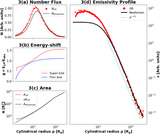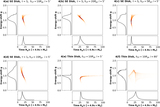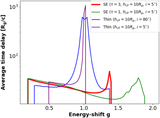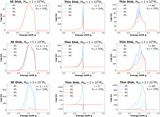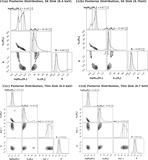Image Details
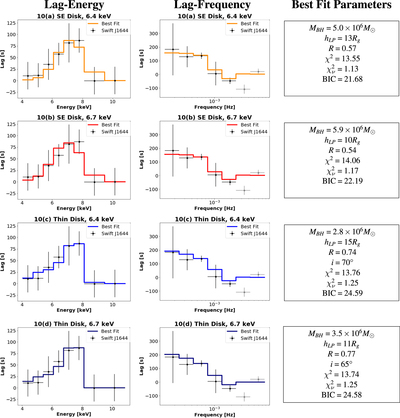
Caption: Figure 10.
We apply the MCMC algorithm to obtain the best fits to the observed frequency and energy-dependent lags of Swift J1644 using both the SE accretion disk model and thin disk model, and assume the Fe K line has rest-frame energy of either 6.4 or 6.7 keV. We vary the mass of the BH (MBH = [105−108] M⊙), the height of the corona (hLP = [5–100] Rg), and the dilution factor (R = [0.01, 2]). For the SE disk model, the observer inclination angle i is fixed at 5°, while for the thin disk model i is an extra free parameter in the range of [35°–80°]. The best-fit parameters are listed in the right side of each row together with the chi-square, reduced chi-square, and BIC values. The Swift J1644 observed lag spectra are plotted as the black dots with error bars, and the best-fit modeled lag spectra are plotted using colored lines. All observational points are within 1σ from all model predictions except the last two high-frequency lags points in Figure 9(b) (colored gray). At these high frequencies, it is increasingly difficult to disentangle the lag contribution due to a loss of coherence (see Uttley et al. 2014, Section 2) and the Poisson noise further reduce the signal-to-noise ratio in this regime, so the two data points are not trustworthy. The best-fit parameters across all configurations indicate a BH mass of MBH = (2−6) × 106 M⊙ with the lamppost corona located at hLP = 10–15 Rg above the BH. The SE models are slightly preferred over the thin disk models. Also, see Figure 11 for the 1D and 2D probability functions of the MCMC fit, the most probable parameters and the uncertainty.
Copyright and Terms & Conditions
© 2022. The Author(s). Published by the American Astronomical Society.




